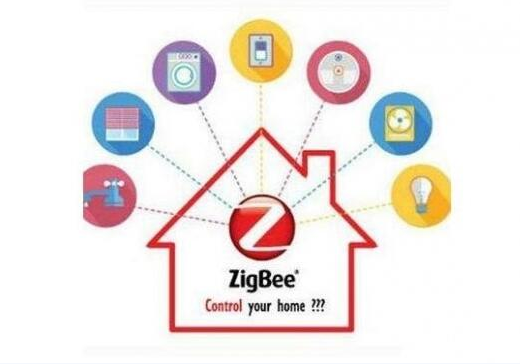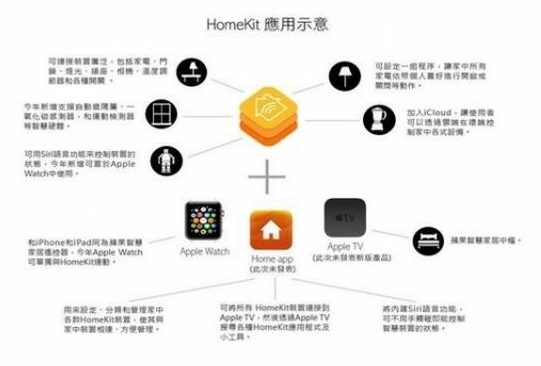Relying on the Internet of Things, the smart home industry is developing rapidly. It is predicted that the scale of the global smart home market is expected to exceed 100 billion US dollars in 2017, with a compound annual growth rate of around 20%, and the potential is huge. Faced with such a huge market "cake", both the upstream semiconductor manufacturers and the mid-stream and downstream product design designers are vying to arrange smart homes with the intention of inciting the blue ocean. At present, the biggest feature of the development of smart home is that the wireless communication protocol standards are different, and the diversification agreement is everywhere. As a pioneer, Bluetooth 5.0, WiFi, and ZigBee first occupied most of the market. Later, Thread, Macbee, and Homekit emerged as new forces, bringing impact to the current wireless communications field, or changing the market. ZigBee, Bluetooth 5.0, WiFi All along, the domestic smart lighting market agreement is the existence of diversified differentiation. ZigBee, Bluetooth 5.0, and WiFi are the three major communication protocols that hold most of the market share. Each has its own advantages and is the preferred choice of most vendors. Zigbee Since 2002, the Zigbee Alliance and its member companies have been working to create standards, certification programs, and testing tools for building interoperable products for low-power wireless Internet of Things (IoT). The number of devices using the zigbee standard to date has exceeded one billion worldwide. As a wireless communication technology, zigbee can only be applied in networks with low speed, static, high node density or low data transmission control, and can not be directly controlled by smart phones, but also requires additional gateways. It can be said that there are many leaks, but because of its low power consumption, low cost, short delay, large network capacity, security and reliability, and the promotion of Philips and Osram, it has been used by more and more mainstream manufacturers. Bluetooth 5.0 Compared with ZigBee, Bluetooth 5.0 has little difference and also occupies some markets. Bluetooth 5.0 is the next-generation Bluetooth standard released by the Bluetooth Special Alliance Group on June 16, 2016. Compared with Bluetooth 4.2, Bluetooth 5.0 has a comprehensive improvement, whether it is communication speed, communication distance or communication capacity has been greatly improved. Compared with other wireless technologies: wireless 2.4G, WiFi, etc., Bluetooth has many advantages such as perfect encryption measures, stable transmission process and rich compatible devices. Today, wireless communication protocols are everywhere, Bluetooth 5.0 can spread almost all digital devices, allowing wireless communication between various digital devices. It is with such a powerful function that Bluetooth 5.0 has a large share of the wireless communication market and has become the choice of most enterprise vendors. WiFi The Internet of Things has reached the smart home, and there are many agreements, the most successful of which is WiFi. The advantage of WIFI technology is that the radio wave coverage is wide (100m), the network speed is high, the mobility is good, and the manufacturer enters this threshold. However, the WiFi protocol is applied to intelligent lighting, and the number of connected items is large, the stability of the connection is tested, and the penetration problem needs to be solved. At the same time, Wifi has a higher bandwidth at the cost of higher power consumption, so portable WIFI devices require higher energy reserves, which limits the promotion of smart lighting. Macbee, Thread, Homekit debut Bluetooth 5.0, WiFi, and ZigBee are the most popular wireless communication protocols in the smart home industry . Although they have many shortcomings and limitations, they have always been the focus of the majority of manufacturers. At the same time, other wireless communication protocols have brought bright spots and entered the wireless communication market. MacBee MacBee is a communication protocol realized by Galaxy Fengyun to solve the problem of smart home communication. While realizing the function of smart home, it helps many lighting companies realize the intelligent control problem of lighting. As an ultra-low-power micro-cellular wireless IoT communication protocol, MacBee adopts multi-protocol-compatible self-organizing network two-way linkage technology framework from cloud to application to connect to global unified standards. The service architecture is global, real-time and high. Reliable, high efficiency, and cost-effective. Chairman of the Galaxy Fengyun and Chairman of the MacBee Technology Alliance, Zeng Yu pointed out at the 3rd China IOT Conference that "Bluetooth is born for headphones, WiFi is for mobile phones and laptops, ZigBee is for M2M, MacBee is for families." The Internet of Things is born." At present, Galaxy Fengyun's smart home system uses WiFi in addition to video transmission, and all other smart home devices use MacBee's wireless two-way networking technology, including lighting, electrician, security, curtains, door locks, home appliances, Various applications such as sensors. According to Zeng Yu, the current MacBee chip sales have exceeded 30w, and are still growing. It is expected to generate 10 to 20 million connections after landing in 17 years. MacBee technology has made a breakthrough in the application of smart home systems, or will bring impact to the current wireless communications field. At the same time, it will also bring better and better choices for smart home enterprises that are still hesitant in wireless communication protocols. Thread Similar to Zigbee, Thread is also based on the low-cost, low-power 802.15.4 chipset development. It is a new generation of IP-based wireless mesh network protocol standard that can support low-power connections, hundreds of node control, and Reliable information security protection. Thread can not only give each connected node a specific IPv6 address, but also establish a connection directly with the gateway. It also has a self-healing function that will not affect the overall network function by any failed node. It is particularly noteworthy that the Thread wireless mesh network architecture achieves extremely low control signal delay and is superior to ZigBee, which is also a mesh network topology. At the same time, due to the similar development background, many products that are currently using Zigbee can support Thread with a simple software upgrade, which is very easy to install and can be extended to hundreds of devices; but different from Zigbee, Thread standard Uniform, unlike Zigbee's products, due to the different implementation methods of different manufacturers, it is not compatible with different products. This can also be said to be the advantage of Thread compared to Zigbee. It can be said that Thread can help designers to achieve real-time control of a large number of luminaires, and can add more ideas for IoT lighting to accelerate the arrival of the smart home era. HomeKit As a gateway to smart homes, wireless communication has triggered a battle for enterprises, and Apple is not to be outdone. In June 2016, Apple released the iOS10 system with built-in native smart home central control HomeAPP, which can use Siri to carry out smart home voice control, and push its smart home open platform HomeKit to the public. Unlike ZigBee, Bluetooth 5.0, WiFi, Macbee, Thread, etc., HomeKit provides a more ideal implementation for smart homes - voice interaction. Apple's HomeKit platform uses the voice assistant Siri as a function to achieve the entry point. Users can use the "automation" setting in Apple's native HomeAPP to edit common scenes of all smart products connected to the HomeKit platform, such as "going home, leaving home, Good morning, good night, etc., through a single command, various smart devices can be combined. That is, all smart devices connected to the HomeKit platform, such as lights, switches, sockets, thermostats, windows, fans, air conditioners, sensors, etc., form a complete smart home system. The user's voice can become an input command, for example, "Hey, Siri, I am home", and the home is on. In addition, users can share control with other family members to coordinate management of smart home devices. It can be said that HomeKit is a milestone for the evolution of smart home from function implementation to interactive experience. Its voice control provides a more feasible development direction for the smart home industry. Who is the main sinker is ultimately determined by the market As Zeng Yu, chairman of Galaxy Fengyun, said that the rise of each kind of agreement is because it meets the needs of certain scenarios. If a protocol can meet all the needs of the Internet of Things, no other protocols will be born at all. In fact, each protocol has its own best-selling scenarios. Today's competition for smart home wireless communication protocols is like the competition of various Internet portals in the past. I believe that the future will be an era of development and integration. Hundreds of flowers will be contending, and various agreements will coexist. But who will become the mainstream, who will be replaced, and ultimately decided by the market. Of course, it is undeniable that Macbee, Homekit, and Thread are emerging from the market dominated by ZigBee, Bluetooth 5.0, and WiFi, or will bring major changes to the wireless communication of smart homes. As a smart lighting company, it is necessary to pay more attention to the new wireless communication protocol and find better technical solutions for enterprise development.
Automotive Connector
Automobile connector is a kind of component that electronic engineers often contact. Its function is very simple: in the circuit is blocked or isolated between the circuit, set up a bridge of communication, so that the current flow, so that the circuit to achieve the intended function. The form and structure of automobile connector are ever-changing. It is mainly composed of four basic structural components: contact parts, shell (depending on the type), insulator. Automotive Connector ShenZhen Antenk Electronics Co,Ltd , https://www.antenkcon.com


